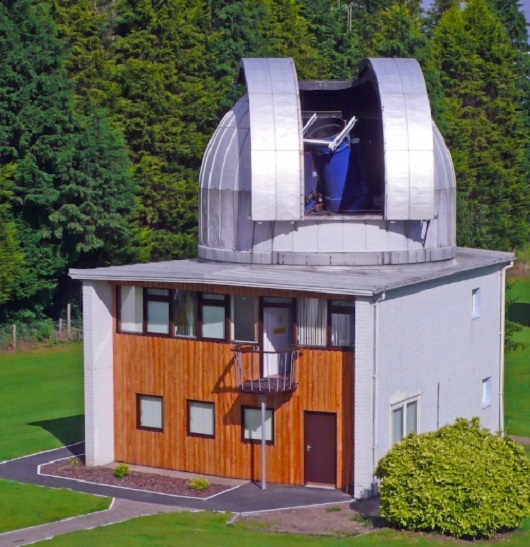Doors open to star factory

Clues to understanding the origins of stars and planets in the Universe can be examined through the largest operational optical telescope in the UK this weekend when the University of St Andrews observatory opens its doors, free of charge, from 1800-2100 hours on Saturday November 29 2014.
The University of St Andrews is offering an intimate view of a unique young star cluster which, according to new research, could reveal insights into the formation of planetary systems. The NGC1333 cluster, in the constellation Perseus, is comprised of around 200 very young stars that have been born only a million years ago – infants by astronomical standards.
Deep surveys of the cluster by an international collaboration led by Dr Aleks Scholz from the School of Physics & Astronomy have discovered dozens of new ‘brown dwarfs’ in this cluster. These enigmatic objects, sometimes called ‘failed stars’, straddle the boundary between stars and planets. Some of the newly discovered brown dwarfs have masses only a few times more massive than Jupiter – they may be giant planets kicked out of their planetary systems shortly after birth.
This week new light has been shed on the area with the publication of new research led by astronomers of the University of St Andrews, and carried out in the framework of the JCMT Gould Belt Survey. The research found that in comparison to other star forming regions, the disks around the young stars in NGC1333 are devoid of dust. None of the stars in NGC1333 has sufficient raw material in its disk to form a planetary system like our own.
Either these stars form planets much faster than commonly thought, or they will only form miniature versions of our own solar system.
Dr. Scholz said:
“We do not understand yet what causes these effects: the two results, the high incidence of brown dwarfs and the lack of dust around the stars, could be related. But this means the formation of stars and planets, and therefore the potential for life in the Universe, depends on where the stars are born. Location matters.”
Dr Scholz will be on hand to share his understanding with any curious visitors.
This year’s open night will also be the observatory’s most accessible; following refurbishment of the building including the addition of wheelchair access. Other improvements include a new control room and modernisation of the James Gregory Telescope. In 2015, the International Year of Light, the James Gregory Telescope will be open to the public every Wednesday from 7 to 9pm.
St Andrews was the workplace of James Gregory (1638-1675), where he established the UK’s first meridian line and first astronomical university observatory. The largest optical telescope in the UK, built in 1962 at the University’s current observatory, is named after him.
The open nights at the observatory are supported by funding from the Elizabeth Lumsden Bequest and the Science & Technology Facilities Council.
The observatory is located just off Buchanan Gardens, St Andrews, in the university’s sports fields.
ENDS
Notes to Editors
The research paper, The JCMT Gould Belt Survey: low-mass proto-planetary discs from a SCUBA-2 census of NGC1333, IS AVAILABLE TO VIEW AT: http://arxiv.org/abs/1411.5931
For images of the cluster and of the telescope please contact the Communications Office.
Previous Brown dwarfs research available at: http://arxiv.org/abs/1309.0823
Issued by the Communications Office, University of St Andrews
Contact Callum Steven on 01334 467230
View the University’s latest news at www.st-andrews.ac.uk/news
For more details on the observatory open night and the telescope:
http://observatory.news.st-andrews.ac.uk/
Category University news